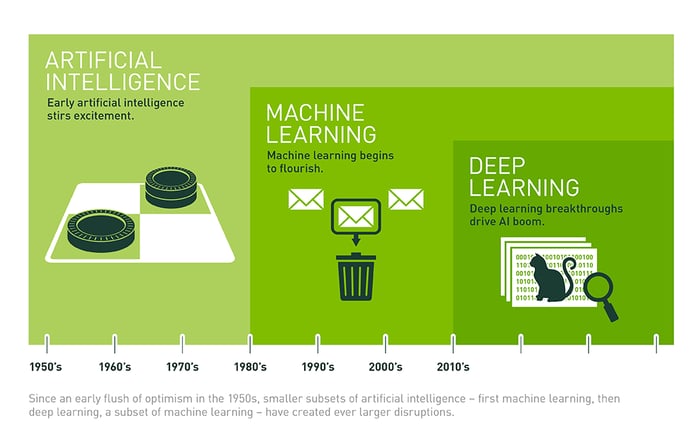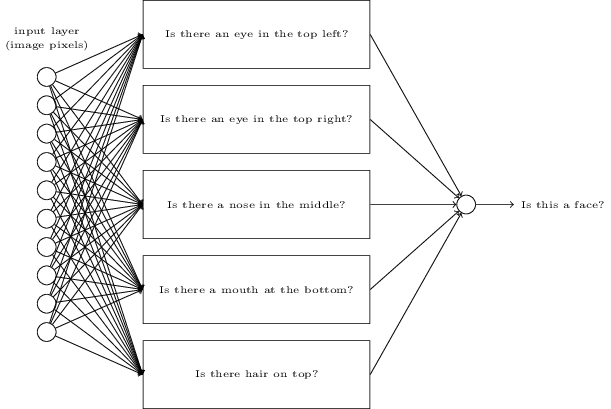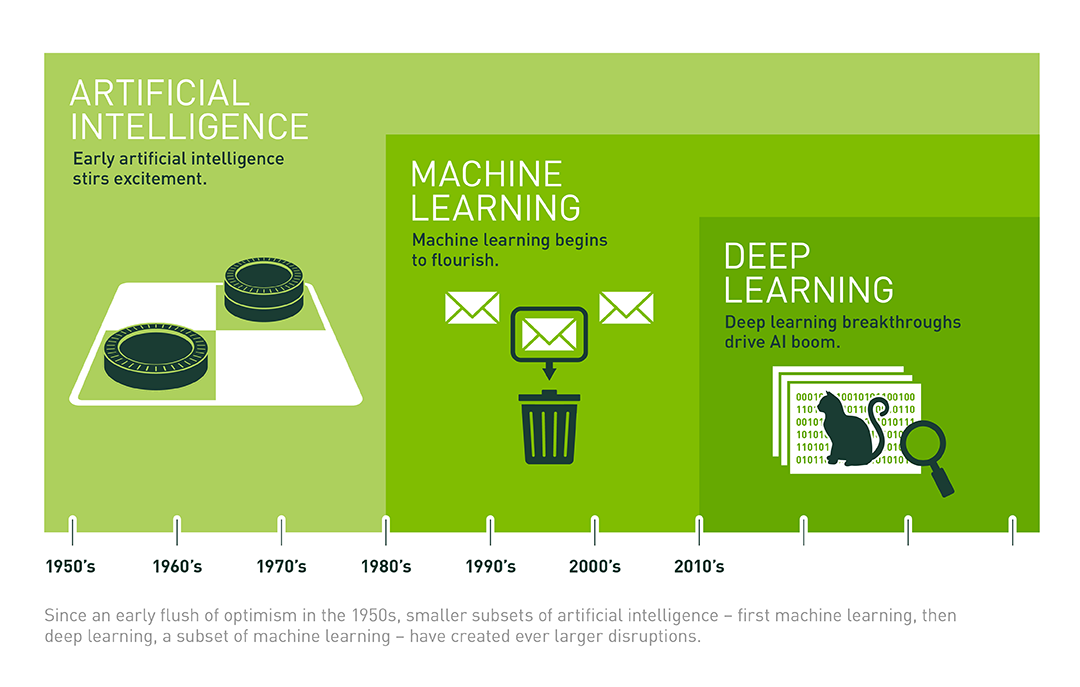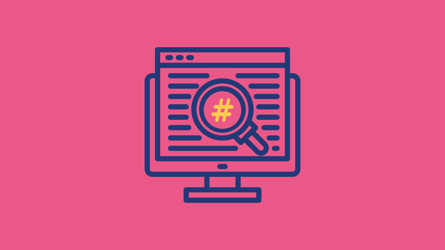Facebook, IBM and Google by far aren’t the only players in the game. Many of our prospects are surprised when we tell them to what extent deep learning and neural networks have become a core part of many of Talkwalker’s features.
I sat down with Dr. Benedikt Wilbertz, our head of machine learning and data science, to learn about the basics of AI and why it’s important for us.
Benedikt, let’s assume for a second I haven’t studied computer. What is the difference between AI, machine learning, and deep learning?
Studied computer? Oh boy.
Artificial Intelligence or AI means a machine mimics "cognitive" functions that humans associate with other human minds, such as learning and problem solving. It dates back to the 60s, when the first rule based models achieved results that were said to contain artificial intelligence.

This graphic shows the evolution of AI. Image Cred: Michael Copeland/Nvidia
The term “machine learning” was used when more computing power was available to perform statistical learning for AI problems. Let’s say you want a computer to be able to recognize a handwritten number three. Rather than being told what a three looks like, the machine uses algorithms to parse large sets of handwriting examples to learn from them.
In 2012, the computing power was available for a renaissance of artificial neural networks. Deep learning means training network architectures that resemble our understanding of the human brain with all its connections.
How does that work in cat picture terms?
If you take the example of the cat picture, a deep neural network would break up the image into very small pieces in the first step, then gradually work its way up to high-level features.

Deep neural networks break information down into pieces and then work their way back up the layers until they can determine an end result. Image cred: Neuralnetworksanddeeplearning.
In 2012, the neural networks that were built by a team around Geoff Hinton from University of Toronto had a big breakthrough that was widely reported at the time.
And now everyone from Siri to Google gives me AI-based recommendations. If this has been going on since the 60s, why the recent boom?
On the tech side it’s a combination of several factors. Processing is faster than ever and the GPUs we need for training are becoming more and more powerful. Digitalization has made it easier to create large labeled data sets as well. Deep learning can’t do without large data sets.
The networks need to be trained with hundreds of thousands, often millions of images, to achieve high-quality results. Every day, we add 300 million articles to the Talkwalker database and our image recognition technology analyzes more than 100 million images.
Okay, got it. Now, how do AI and social listening go together?
Social listening contains many challenges that were historically performed by humans. Most media monitoring companies employ coders that manually sift through the day’s results to map sentiment, for example. But data is increasing exponentially on the web, so much so that in many cases basic cognitive tasks cannot be performed on millions of documents and images per day. The goal is to build AI that can perform these tasks as well as humans can.
Just as long as your team makes sure that AI doesn’t learn how to write content anytime soon, or I can kiss my job goodbye. How did Talkwalker get into the game?
Well, one major challenge for many brands is the vast volumes of images that are being shared. At the beginning of 2016, we introduced Talkwalker's Image Recognition, the first deep learning application to recognize 30,000 brands and logos in images shared on social media. Since then, we’ve rapidly increased our AI-based image applications, adding scenery, objects, gender and age detection.
Natural language processing or NLP for short is another thing that we’ve done pretty much since the beginning and where we’ve had breakthroughs in recent months that will soon be visible across the entire platform. Brands need to be able to perform sentiment analysis with great accuracy across millions of results, and this is an area where deep learning will bring us to a whole new level this year.
Let’s talk resources. Wouldn’t it be better to work with a large provider to do all of this? Why are we developing AI in-house?
Are you after my job now?
Just keeping my options open here.
One of the great things about this technology is that it can scale at nearly no cost. I already mentioned the benefit of being able to use large data sets that are being maintained in-house. Aside from that, developing ourselves lets us monitor the accuracy of our models directly in production systems. We can immediately re-train the models if we detect quality problems. This is the only way to ensure continuously high quality results, and something that an external provider doesn’t do at our level.
But it can’t all be fun and games. Which areas are difficult to get right?
I would say there are three main challenges today: First, applications are mainly supervised learning, which means we need a training set with millions of labeled instances. These data sets are hard to create, especially for the kind of quality requirements we set.
Second, each problem needs a highly specialized algorithm exactly adopted to that kind of problem. Add the fact that it’s generally not known what the best algorithm looks like, and you get a sense of the scope of the task.
Third, all steps need very high computing power. Neural networks cannot be trained on ordinary computers, they need special GPU devices for the training. This leads to all kind of HPC (High Performance Computing) challenges.
Where are things headed? Any sneak peeks?
AI is experiencing this boom with good reason. Technologies powered by machine learning have already found their way into everyday life and there’s no end in sight. Companies like Google, Salesforce and Microsoft are using AI to boost their products. Back in April, Talkwalker was chosen to be part of NVIDIA's Inception Program, which nurtures exceptional startups who are revolutionizing industries with AI and data science. This has been a great opportunity for us and we continue to profit from their expertise to drive new features and functionalities.
As for social listening, sentiment is now an area where the technology will finally live up to the promises some providers have made for years. There are a few other areas that will benefit immensely, but you'll have to stay tuned.
Thank you, Benedikt! We’ll be back for more soon.
If you want to find out more about Talkwalker’s award winning image recognition technology, please contact one of our consultants today. Take a look at our AI glossary, to keep up to date with all the terminology!




